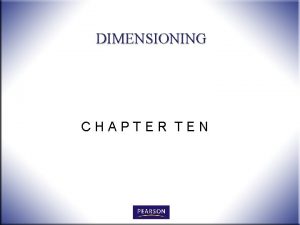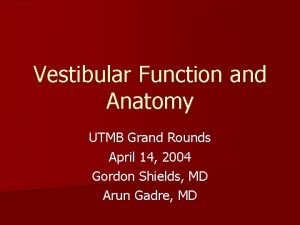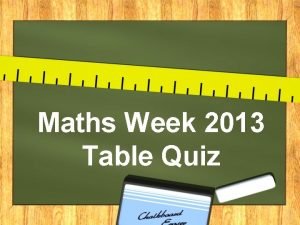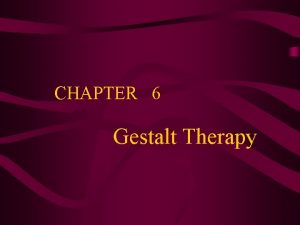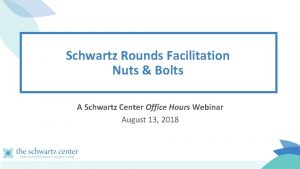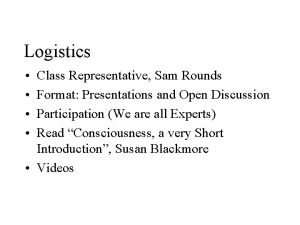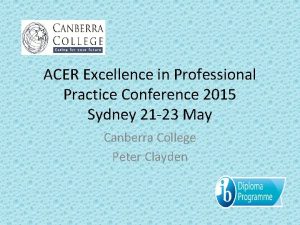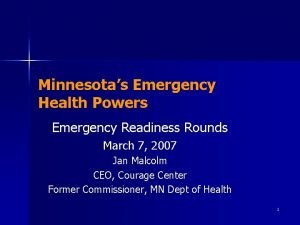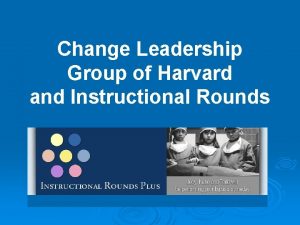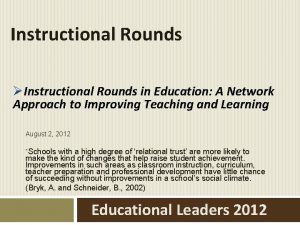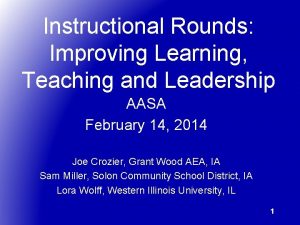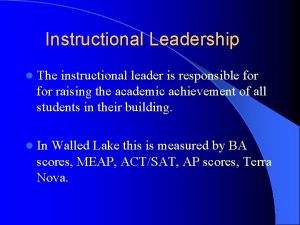Change Leadership Group of Harvard and Instructional Rounds














- Slides: 14

Change Leadership Group of Harvard and Instructional Rounds Jacquelyn A. Flowers, Instructional Partner

Our Target: The Students I can move my students forward in their learning by: 1. Aligning my learning target and activities so that I am engaging students in their own learning through teaching strategically 2. Collaborate with my triad/duo to learn from one another so that I am continuously learning new and shared ways to engage the students 3. To incorporate learning from my professional development in my classroom for the betterment of student learning.

Harvard Video Change Leadership Group of Harvard After 11 years of service, the Change Leadership Group concluded its operation on December 31, 2010. Three of its most popular resources, however, are still available: The faculty of the Three-day Learning Lab consists of former members of CLG. The book, CHANGE LEADERSHIP: A PRACTICAL GUIDE TO IMPROVING OUR SCHOOLS (San Francisco: Wiley), is still available through Amazon and other booksellers. The links to video resources referenced in the book are available below. http: //gsevserv. harvard. edu/ramgen/clg/vlte_29. rm? start=0 0: 22&end=13: 18 10 th Grade English Video

Do not let others see your grade. Grade the video using the scale below. Write your grade for the video on the provided sticky note (for your eyes only). ØA = Ø A- = Ø B+ = ØB = Ø B- = Ø C+ = ØC = Ø C- = Ø D+ = ØD = Ø D- = ØF =

The Harvard Study Results

Debriefing the Activity ØDo you think you would see a similar distribution in our district’s administrators? ØWhat can you infer from the distribution of the ratings? ØWhat are the implications? ØWhat can we do to address this issue?

Common Look Fors and Language 1. Instructional Rounds are based on Doctor’s Rounds. Doctors have common “look fors” and a common language. Thank goodness! 2. We must have common “look fors” and a common language during instruction so we know what are talking about and focusing on otherwise everyone would be speaking a different language and looking for something different. Do you see why? 3. Book: “Instructional Rounds in Education is intended to help education leaders and practitioners develop a shared understanding of what high -quality instruction looks like and what schools and districts need to do to support it. ” Instructional Rounds in Education A Network Approach to Improving Teaching and Learning http: //www. hepg. org/hep/book/99 Elizabeth A. City, Richard F. Elmore, Sarah E. Fiarman, and Lee Teitel, foreword by Andrew Lachman

Instructional Rounds Plus — Lesson Observation & More Are you certain you know good teaching when you see it? What is effective teaching? How do we know for certain what, how, and how much students are learning? What exactly do high quality classrooms and schools look like? Do all those in your school system share the same understanding? Dr. Thomas Fowler-Finn http: //www. instructionalrounds. com/

Excellent Instruction: Wagner’s Point of View “If good instruction — in every classroom and for all students — is the central focus of systemic change in education, then districts need to define “goodness” and come to a shared understanding of what is meant by great or even competent teaching. ” —Change Leadership, p. 37

Wagner’s Conclusion? “Without agreed upon definitions (or at least a clarification of how a person is using a term) and observable data that support the person’s assessment of the lesson, conversations about teaching and learning remain ethereal, reinforcing the teaching profession’s weak craft knowledge base, professional language, and standards of practice. We need agreed-upon criteria. ” (p. 38)

Important Principles Ø“Increases in student learning occur only as a consequence of improvements in the level of content, teachers’ knowledge and skill, and student engagement. ” Ø“If you change any single element of the instructional core, you have to change the other two. ” Instructional Rounds in Education, pp. 24 -25

Look for Relationships “It is the relationship between the teacher, the student, and the content— not the qualities of any one of them by themselves –that determines the nature of instructional practice, and each corner of the instructional core has its own particular role and resources to bring to the instructional process. ” Instructional Rounds in Education, p. 24.

Our Target: Moving our Students Forward in their Learning The emphasis is on developing a “learning community” of instructional leadership for district administrators, principals, assistant principals, and teachers from which high quality teaching and learning is identified, deconstructed, and strategically developed in classrooms. The result is a focused and insightful approach to effective instructional leadership and teaching/learning excellence. Dr. Thomas Fowler-Finn http: //www. instructionalrounds. com/

3 -2 -1 Reflect on the video and how instructional rounds tie in: • 3 Better Understandings • 2 Commitments • 1 Questions or Concern **Give me your 3 -2 -1 on the way out. Questions and concerns will be addressed through email.
 Harvard instructional rounds
Harvard instructional rounds Conventional dimensioning
Conventional dimensioning Utmb grand rounds
Utmb grand rounds How do you round 75 to the nearest 10
How do you round 75 to the nearest 10 Maths quiz rounds names
Maths quiz rounds names 5 layers of neurosis gestalt
5 layers of neurosis gestalt A is an odd number which rounds to 100 000
A is an odd number which rounds to 100 000 Maintenance rounds
Maintenance rounds Schwartz rounds facilitator training
Schwartz rounds facilitator training Sam rounds
Sam rounds Quality teaching rounds coding sheet
Quality teaching rounds coding sheet Red, white & blue bite size rounds tortilla chips
Red, white & blue bite size rounds tortilla chips Readiness rounds
Readiness rounds Breech face gun
Breech face gun Duke family medicine and community health
Duke family medicine and community health

